10 Ways to Turbocharge Your Weight Loss With Brisk Walking

If you're working hard trying to lose weight, we have some advice: Step up your pace and embark on a brisk walk! We've rounded up some of the best expert tips to walk faster and help you lose more weight.
Walking every day is an excellent, healthy way to burn calories. The faster you walk in a given period of time will absolutely help you reach your goal much faster. But just how much faster should you walk? Well, a person weighing 155 pounds can burn approximately 133 calories walking 3.5 miles per hour (mph), while bumping it up to four mph can torch 175 calories for that same individual.
"Speed walking (or power walking/brisk walking) is a great form of medium—to high-intensity cardio that is less high-impact and less fatiguing than running," explains Kate Meier, NASM-CPT from Garage Gym Reviews. "Keeping your overall fatigue lower when you're eating at a caloric deficit to lose weight is ideal if you want to have sustainable, long-term success."
That being said, we have the best expert tips to turbocharge your weight-loss efforts with brisk walking. So, lace up your sneakers, and let's get started!
First and foremost, establish your baseline.

Meier suggests learning your baseline. To do so, warm up by walking five to 10 minutes, then timing yourself as you walk a mile a few times to find your average walking speed and heart rate.
"Check your heart rate at the end of the mile by taking your pulse," she explains. "You can also use an app and fitness tracker for this."
Practice correct form.
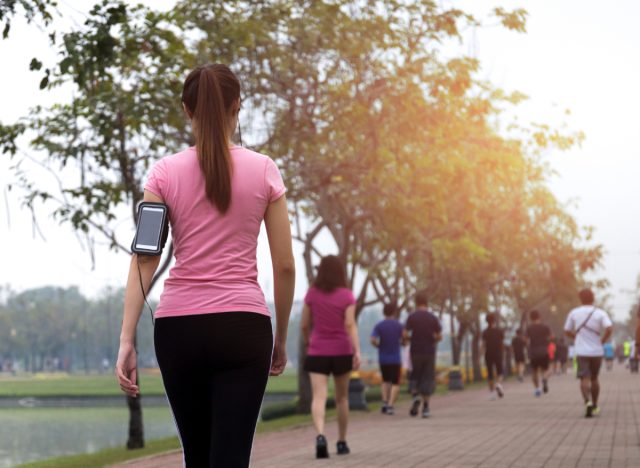
Be mindful of using proper posture during your brisk walks. This will help bump up your speed by as much as 0.5 to 1 mph, according to Meier. It can also shave approximately two to four minutes off of your mile time!
Don't overstride.
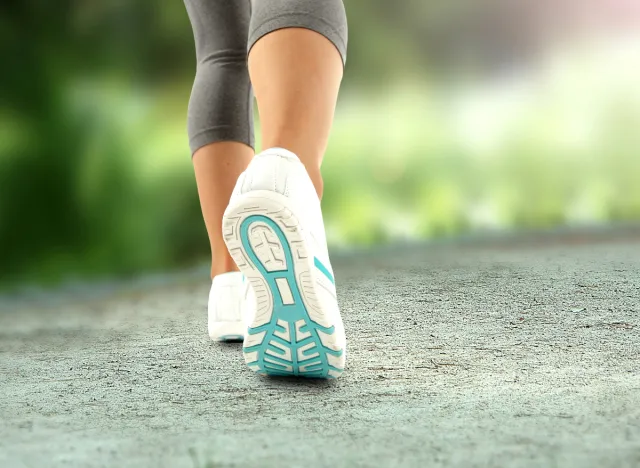
Keep your stride in check. Meier suggests, "Use a good stride, rolling through each step from heel to toe and pushing off from the trailing foot. Avoid the mistake of overstriding, which is common among people trying to walk faster."
Incorporate speed-building techniques.
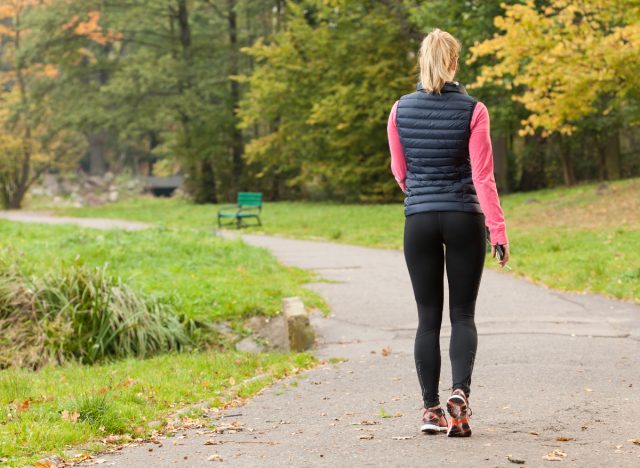
After a solid 10-minute warm-up, switch off between walking fast for 30 seconds or 200 meters of distance, followed by walking comfortably for two minutes. Repeat this eight to 12 times, and cool down by completing a 10-minute, easy-paced stride.
Include strength training.
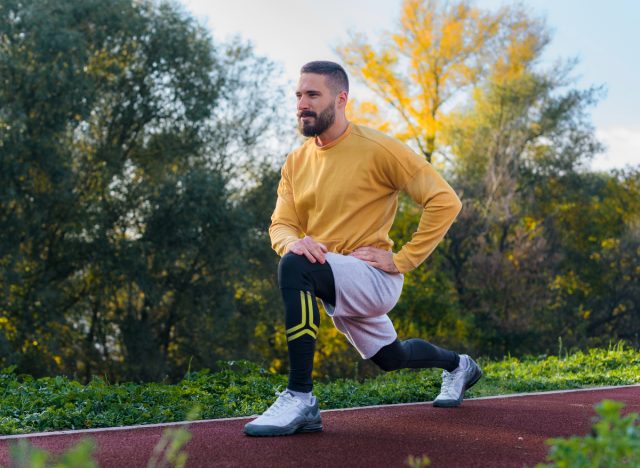
Meier points out, "Stronger legs and a more sturdy core will help you walk faster to burn more calories. Plus, you'll burn calories and increase your metabolism through your strength sessions. You'll also increase your joint stability, preventing pain from walking, and help you walk faster and longer without risk."
Walk with a buddy.
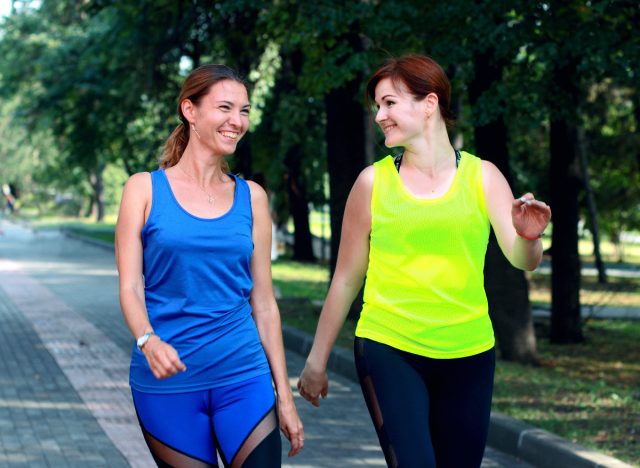
Walking with someone or several people can naturally boost your brisk walking game and overall calorie burn. "You might even want to walk longer at your faster pace since you'll enjoy your walk more with a social aspect," Meier says. "Group walks can even boost consistency and motivation to stick with it due to the accountability and motivational aspects."
Crank up the tunes.
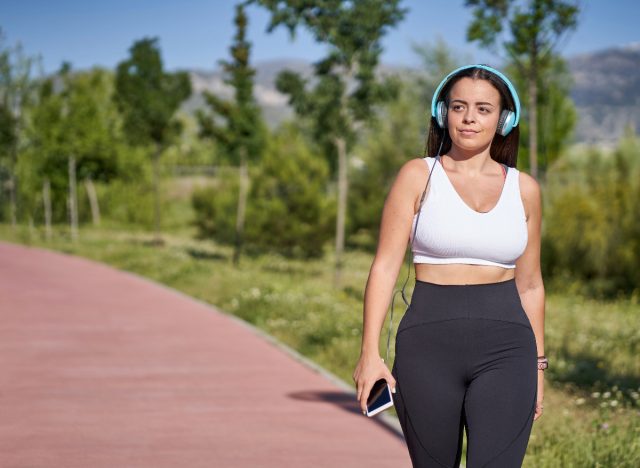
Listening to fast-paced music can help turbocharger your brisk walk. "Load up your playlist with some upbeat music," Meier suggests. "The tempo and character of music can impact walking speed, with fast, motivational music increasing walking tempo."
Get your arms moving.
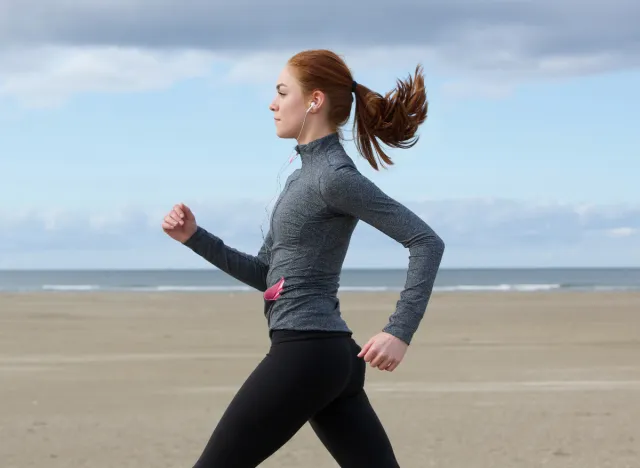
If you want to upgrade your brisk walking routine, Meier recommends, "Move your arms, swinging them in time with your strides to help you walk faster."
To get in a solid strength workout and torch even more calories, you may even want to consider wearing arm weights! After all, muscle burns more calories than fat.
Wear good walking shoes.
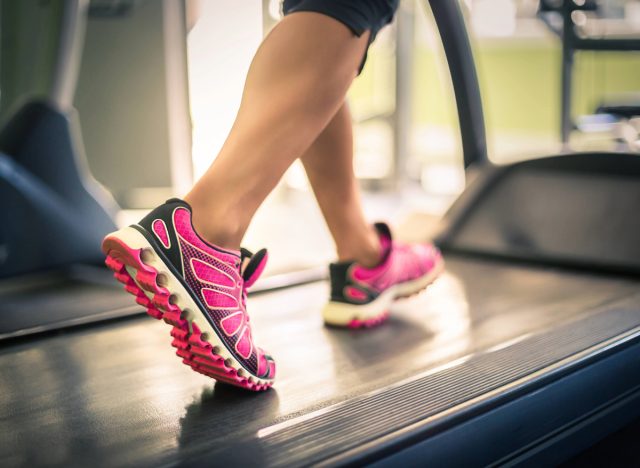
Your shoes are essential for practicing good form, achieving your desired speed, and ensuring your feet remain comfortable. "Be sure to wear well-fitting [shoes] that help propel you forward," Meier tells us.
Progress over time.
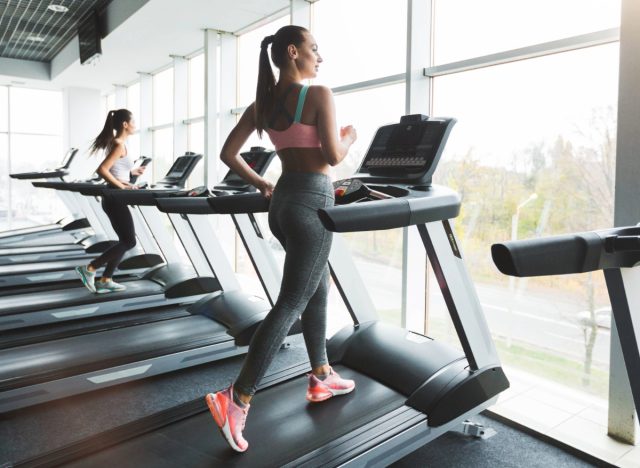
Walking for exercise shouldn't be a race; it's essential that you work up to a fast pace slowly, over time. "Let your body get used to the faster pace," Meier explains. "This will help prevent injuries and burnout while letting your metabolism adjust without overcompensating with a slowdown."









